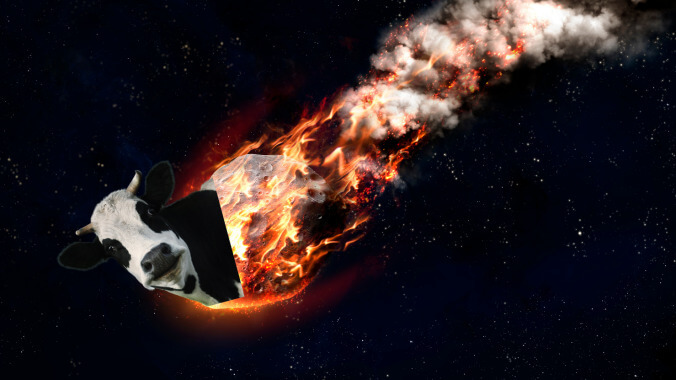Brace yourselves, humanity: The "Cow of Comets" approacheth
The largest comet ever observed will graze within our cosmic pasture come 2031

The majesty of space is often difficult to put into words, but every so often professional stargazers are able to reverently meditate upon the heavens before properly articulating the cosmic grandeur on display far above humanity’s humble heads. Late last month, the universe gifted just one such occasion to us: A big “cow comet” is farting its way towards us real fast, y’all.
As The Daily Beast reports, the largest comet ever observed by humanity is currently on track to pass through our solar system between Uranus and Saturn in less than ten years’ time. At an estimated 60 to 100 miles wide, Bernardinelli-Bernstein (named after its discoverers) is the “nearly spherical cow of comets,” dwarfing its celestial comparisons like Hale-Bopp, which only measures a measly 37 miles across.
“It’s pristine,” University of Pennsylvania astronomer Pedro Bernardinelli explains of their beloved bovine comet. “Not a lot has happened to this object since its formation in the early days of the solar system, and so we can think of it as a window into the past.”











![HBO teases new Euphoria, Larry David, and much more in 2026 sizzle reel [Updated]](https://img.pastemagazine.com/wp-content/avuploads/2025/12/12100344/MixCollage-12-Dec-2025-09-56-AM-9137.jpg)




























